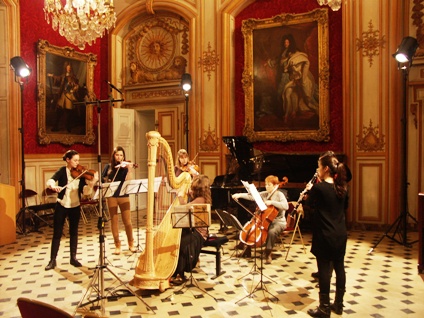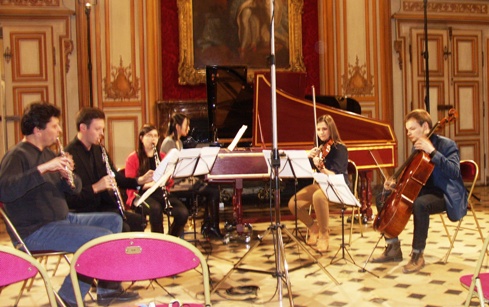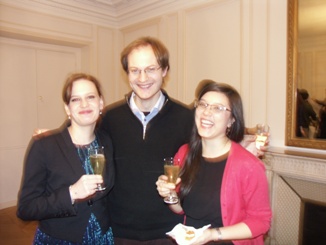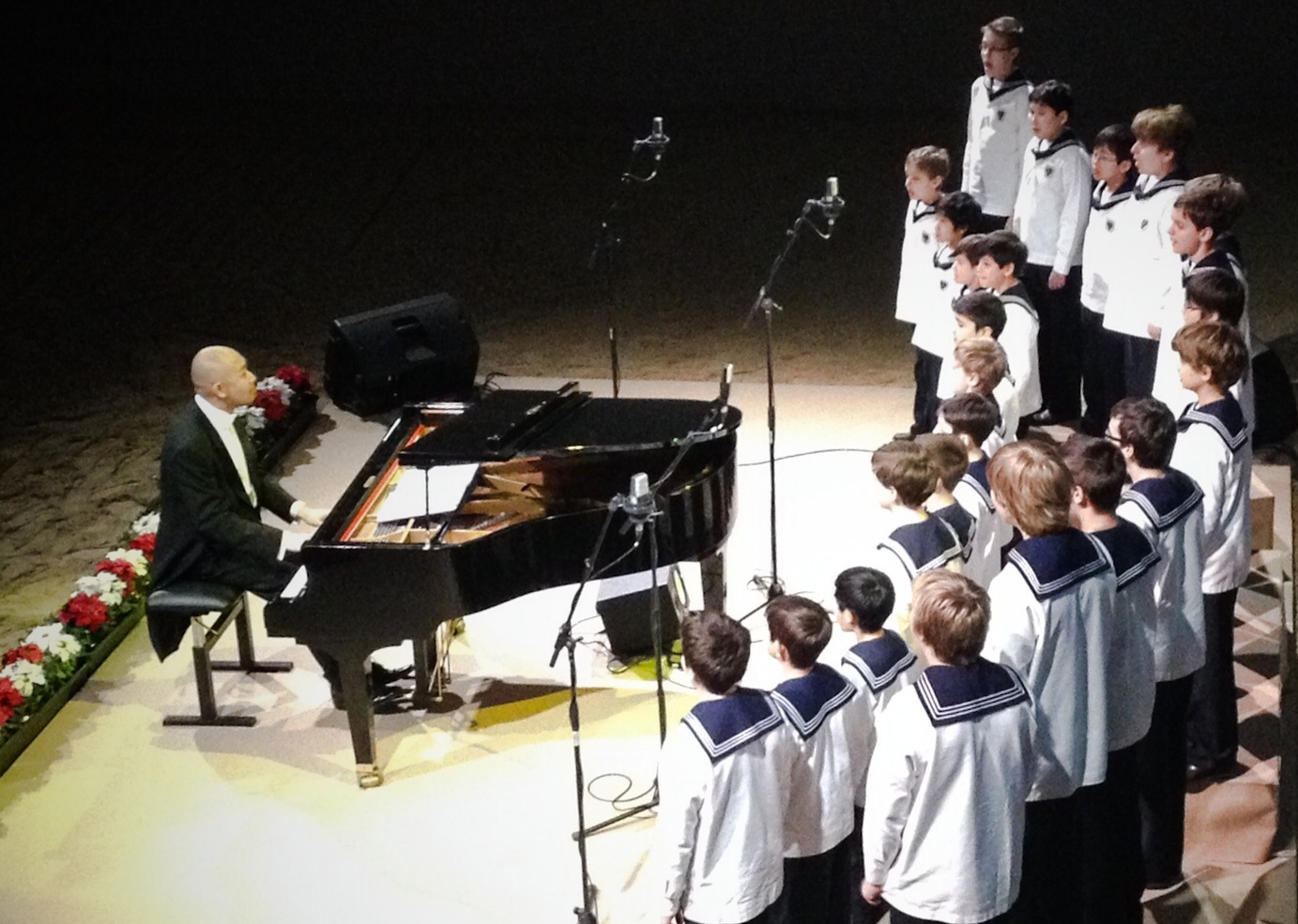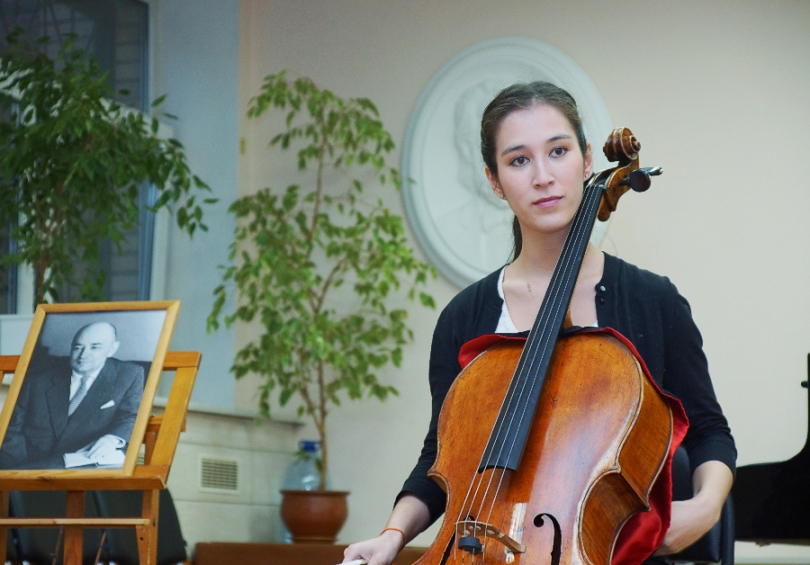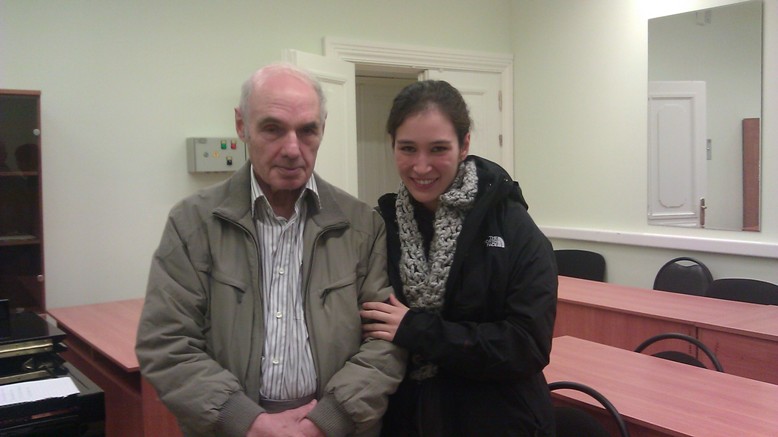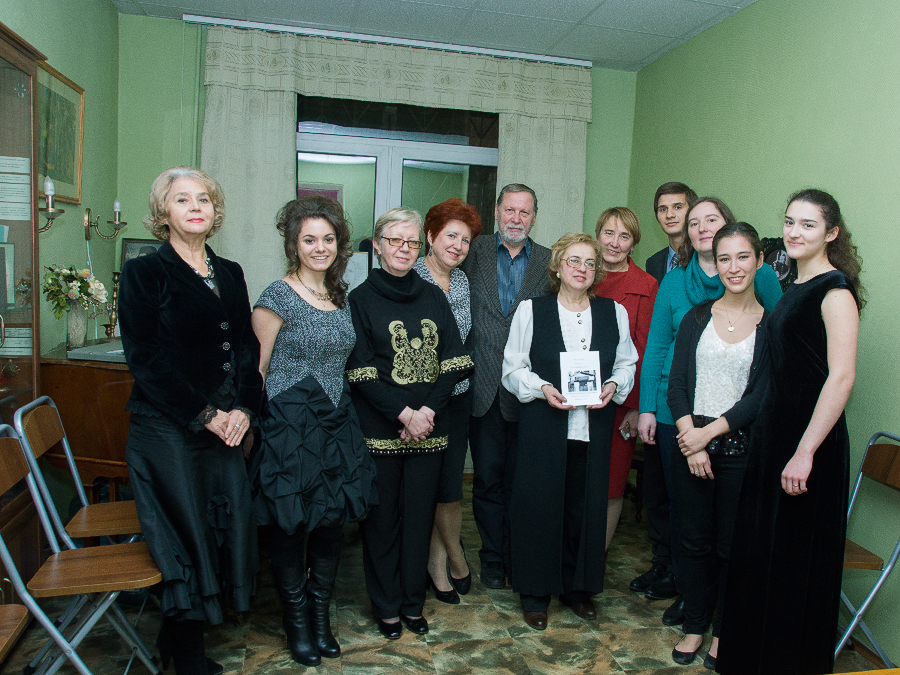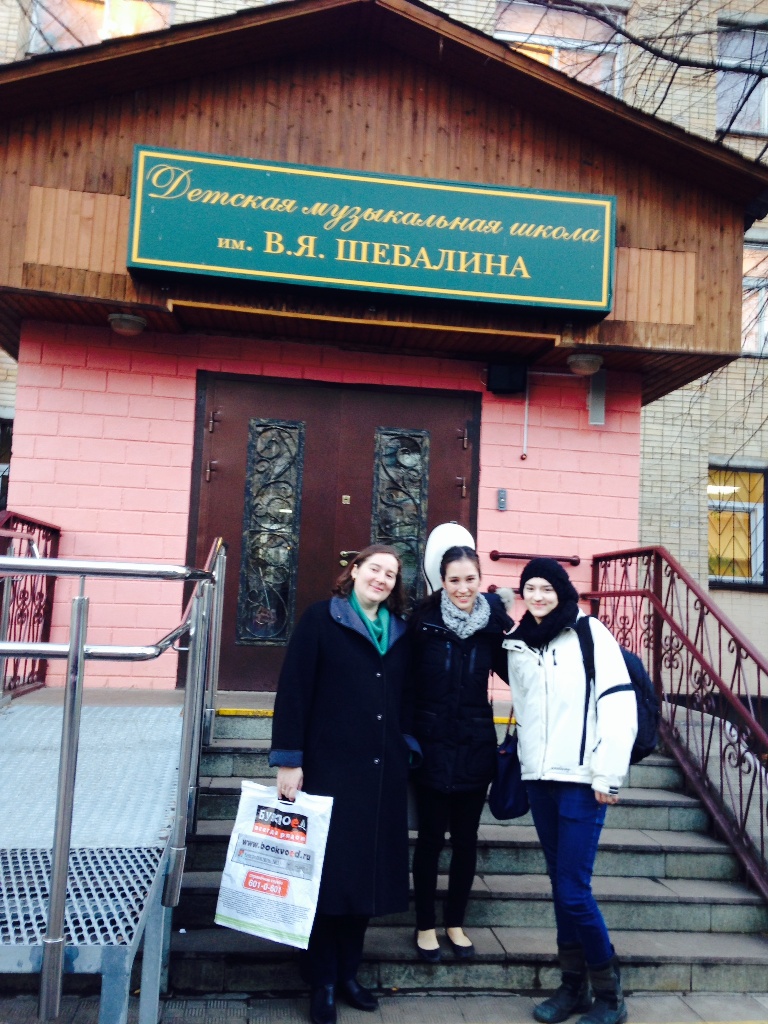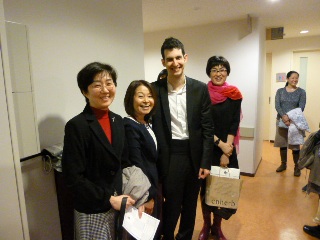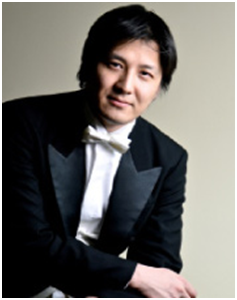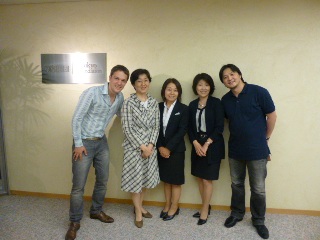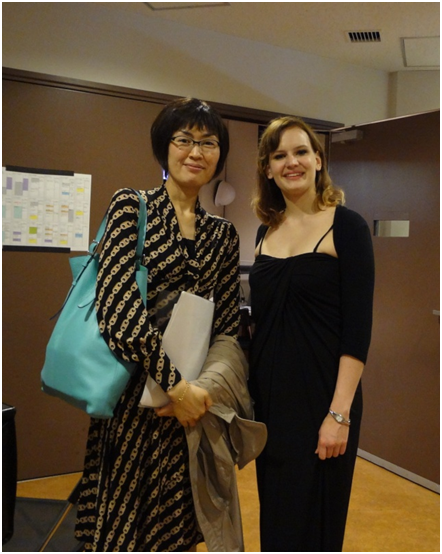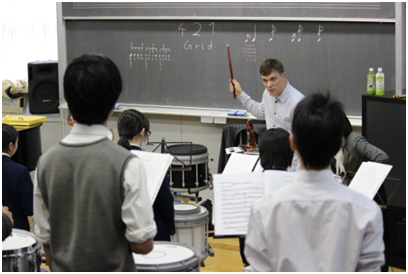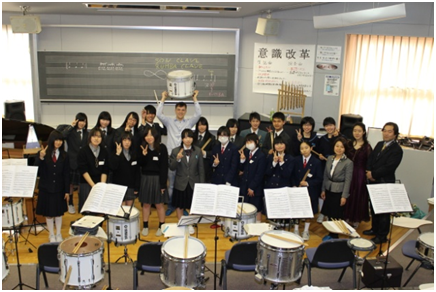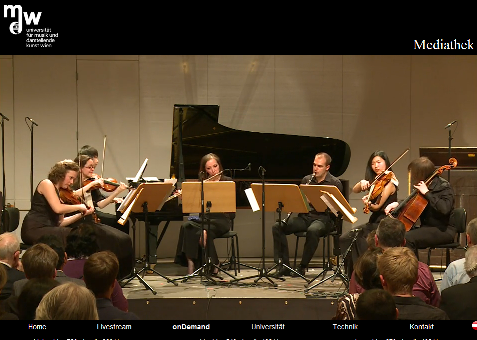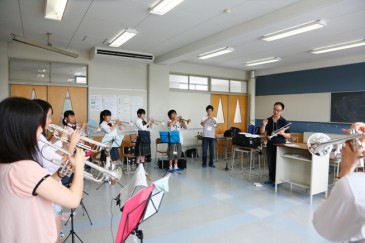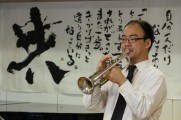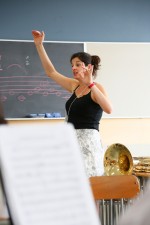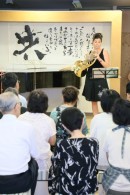Can the liberal arts maintain its value in society despite losing both popularity and funding to such practical disciplines as the sciences, engineering, and business administration? Christopher Lees, a Sylff fellow while at National and Kapodistrian University of Athens, offers steps that can be taken by arts scholars to maintain the relevance of their discipline in society, using examples from Greece and sociolinguistics.
* * *
Introduction

The author deilvering a speech at Sylff ceremony at the University of Athens
At last year’s anniversary marking Sylff’s 20-year presence at the University of Athens in Greece, I was given the opportunity to speak about the crisis the liberal arts face today in the context of the economic crisis. Ever increasingly, the arts are brushed to the sidelines, considered of secondary importance compared to the sciences, technology, and business studies. This is apparent the world over with numerous departments being merged, reduced, or even threatened with closure. In Greece too, the infamous and narrowly averted Athina Plan proposed by the Ministry of Education saw it fit to heap foreign language departments together so as to create one giant “Department of Foreign Languages,” apparently with no regard for the academic integrity and significance of each department’s work and research as a separate entity.
In part, this stance towards the arts and their subjects is borne out of today’s predominant philosophy that only visibly practical things are worth people’s time, money and investment. As far as degree courses are concerned, this is often translated to mean that students tend to select a course that they see to be directly linked to the job market. This perhaps explains the popularity of business management and finance-related courses, which, according to David Williams (n.d.), are the most popular among Greek students (but not only Greek students) pursuing postgraduate education.
While students themselves cannot be blamed for choosing a degree course that they envisage will provide them with good employment prospects, this devaluation of arts subjects runs the risk of creating a sense that they are simply not worth studying. I myself, as a former undergraduate student in the UK, was frequently met with bewildered expressions on the faces of those who learned of my intention to study foreign languages at university.
Furthermore, this ever increasing lack of appreciation for the arts also poses the threat of subjects not being given the funding they deserve to carry out important research projects, and this is something which is being increasingly felt on an international level, where students find it difficult to get scholarships, and academic staff face increasing hurdles in publishing their work.
Arts subjects cannot, however, be entirely absolved from blame in relation to the regard in which they are held in society. While a doctor may not need to convince society about the importance of medicine and medical research, and an economist may not need to validate his work by highlighting the significance of sound finance, the arts scholar needs to and should take it upon him- or herself to inform society of the relevance of his/her subject. Quite often, knowledge generated by the arts subjects is confined and recycled within the academic circles of universities, which in turn are often treated as monasteries of knowledge and, indeed, even referred to as not being “the real world.”
Arts subjects and their scholars should, therefore, make the extra effort to share the knowledge they generate with the wider circles of society so that they too may benefit from what these subjects have to teach and offer us. This, I believe, is a general principle by which universities should operate: not to exclude nonmembers of what sometimes resembles the academic elite but to involve them in the work being carried out and to show them how this work is relevant to our lives. In this article, I intend to show how the arts are relevant to society and how scholars may make their work more accessible. I shall do this from the perspective of my own field, sociolinguistics, and then show how the arts can be made more accessible to ordinary members of society.
Sociolinguistics and Society
The relationship between language and society is well documented in linguistics. Just as language reflects social structures, ideologies, and stances, so too does language have the ability to influence and shape society, its structures, and its perceptions (Dittmar 1976, Lucy 1992, Wardhaugh 1992). That is to say that, while the speakers of a language coin or adopt phrases to express themselves linguistically, these same linguistic expressions, through repeated contextualized instances of usage, subsequently contribute to the way speakers think and view the world around them, evidenced by the fact that many linguistic expressions, proverbs, and idioms are unique to specific languages and reflect and form the mentalities of their speakers. Consequently, it is possible for us to refer to the relationship between language and society as being a two-way one: society depends on language to express itself, and language depends on society in order to develop and lexically reflect social structures and values.
According to Kakridi-Ferrari (2005: 53), many sociolinguists feel the need to use their specialized knowledge in order to offer something of practical use to society. As such, one of the main aims of sociolinguistic scholarship is to highlight what language can show us about society, its issues and problems, and how this can then be applied for practical purposes in various areas, from solving issues of inequality and prejudice to better understanding social norms and improving education.
Linguistic sexism, for instance, is an example of how social inequality is mirrored and redistributed linguistically. Sociolinguistic researchers, especially during the US feminist movement of the 1970s, have attempted to highlight some of the features of language that undermine or even exclude the role of women in society. In inflected languages such as Greek, where gender is morphologically marked, this is a particularly problematic issue, especially apparent in nouns denoting professions, for which many still only use a masculine noun ending.
In addition to this, generic references to groups comprising more than one person also, by and large, use exclusively masculine noun endings, thus linguistically excluding women from many sectors of society and creating a sense of a need to adopt male values and practices imposed on them by society and reflected and redistributed linguistically (see Pavlidou 2002). Sociolinguistics is therefore in a position to use its findings to highlight aspects of how language demonstrates sexism in society and to attempt to suggest, at least from a linguistic point of view, how this may be resolved. Once this has been done, both findings and suggestions can be forwarded to the relevant government departments, who may in turn make changes to the existing legislation.
Another area of social inequality visible through language is that of racism. Van Dijk’s (1993) seminal study of how elite discourse, notably that of the press, constructs and disseminates racial prejudice, shows us both how language mirrors a society’s mindset and also how this is then negotiated and propagated though a process of social cognition, that is to say, repeated exposure to expressions of racial sentiment, which then becomes etched in the minds of speakers.
I myself have researched the ways in which Greek newspapers make use of intricate linguistic strategies so as, on the one hand, to represent what they view as mainstream Greek public opinion and, on the other, to fuel feelings of racial tension (Lees 2012). This latter instance serves as a very good example of how the two-way relationship between language and society can be viewed in action against the background of political change in Greece, where older perceptions are being constantly challenged, thus creating a dynamic mix of opinion represented in the language of the press.
As was the case for linguistic sexism, sociolinguistics can again here uncover the linguistic practices of journalists and raise awareness of how these may not always be as objective as one might be inclined to think but are directly related to political and social ideology. Again, by highlighting this, pressure can be brought to bear on the government of the day to make changes to policies concerning racism.
Another important area to which sociolinguistics can contribute is that of education. The foundations of how the social aspects of language interact with education were laid by Basil Bernstein (1971) and his theory of restricted and elaborated codes. Despite the criticism he received, Bernstein was the first to draw attention to the fact that a child’s success at school is directly linked to the linguistic interaction he or she engages in at home. The logical consequence of this is that those children who engage in linguistic interaction at home that closely resembles that of the language taught in schools will be in a better position to do well in education.
It is worth noting that there is often a marked difference between the language taught in schools and the varieties spoken in even a small local community. The emphasis in education should, therefore, be placed on assisting speakers of regional and social varieties to adapt to the standardized language used in schools for the purpose of education, while acknowledging and respecting language rights. This was clearly shown by Labov (1972) in his influential work on the language of the African American community, known then as BEV (Black English Vernacular) and now called African American Vernacular English (AAVE). He concluded that schools should not treat AAVE as substandard, as was often the case, thus placing its speakers at a distinct disadvantage in comparison to those who at home speak the standard form of English taught in schools, but as a distinct social variety of English with its own grammatical rules.
Due to the fact that sociolinguistics, by nature of its subject, is in a position to research and highlight social aspects of language and because language is a social phenomenon, its role in education is particularly crucial. Just as is the case with social prejudice reflected and propagated through language, so is there linguistic prejudice against language varieties. Sociolinguists can work with education policymakers to assure that—while a standard language form is necessary for education and indeed for communication purposes—regional and social varieties of a language are respected and even taught, especially when used by pupils.
A case in point is the research I am currently involved in regarding the language used by Greek teenagers on Facebook (Lees et al. 2014). Since computer mediated language practices have become an inseparable part of teenagers’ lives, and since these computer mediated language practices have their own unique features, we feel that they needed to be treated as a variety of Greek and incorporated into the school curriculum. This is not to say that computer mediated language practices should be taught as standard, merely that it can be used to increase pupils’ critical awareness of the social aspects of language and how, why, and in which contexts these differ from the language taught as standard in schools.
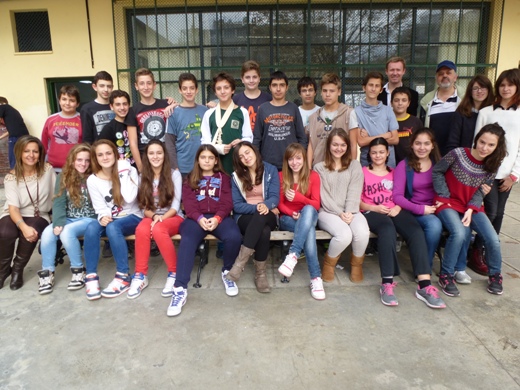
A group of Greek teenagers the author works with.
In sum, the role that sociolinguistics does and can play in society is apparent and the benefits clear. As previously noted, these benefits need not (and should not) be confined to within the walls of universities and research centers but practically applied to all areas of society where language has an impact. This will ensure that the values and significance of sociolinguistics are known on a much wider scale. The same logic can and, in my opinion, must be applied to all arts subjects so that they may regain some of the prestige and deference lost in the wake of the economic crisis and so that the notion that the arts are not practical subjects and, therefore, not worth investing in can be dismissed. In the next section, some ways in which this can be done are briefly outlined and discussed.
Bringing the Arts Home
There are several ways in which the significance of the arts can be shared with the wider community. For example, scholars may choose to write their research findings in popular newspapers and magazines. Quite different from an academic journal, such mediums allow the scholar to target a much wider audience with various interests. Of course, the style of writing and content must be simplified and even, perhaps, popularized. However, publishing through the popular media allows the scholar to present, discuss, and share their research with a variety of people, many of whom may not even know that fields like sociolinguistics exist, let alone what they do.
Aside from showcasing research, the arts scholar may also use the media of newspapers and magazines to highlight, even on a regular basis by means of a column, the relevance of their topic. For the sociolinguist, this could involve the social aspects of language, including anything from language minority issues to language policy and even street art and graffiti, much of which, especially in Greece, is of a highly political nature. Writing in newspapers and magazines also serves the purpose of dispelling many of the myths concerning language that are often written by nonlinguists who lack the appropriate background to offer academically informed opinions.
Another area in which the arts can be promoted is through the organization of talks in local communities. This can be done either through local community centers or local education authorities. Informal in nature, such talks provide a good opportunity for local community members to come together and learn of the work and research being carried out in any given field. As with the use of the media, talks also allow disadvantaged members of the community to participate in learning in ways that may have previously been inaccessible to them.
Depending on the research interests of the scholar, it may even be possible for local members of the community to actively participate in a research project. In terms of sociolinguistics, a valuable aspect of having community members participate in such projects is that it will enable them to better understand the value of their cultural and linguistic attributes, which in many cases are highly stigmatized.
Finally, another way in which the arts and their subjects can be shared with the local community is through reading groups and free seminars. More formal in nature compared with local talks, such groups generally target people with an academic interest in the field. They may be offered on a volunteer basis and could be integrated into a wider context of volunteer work to provide free education for disadvantaged members of the public or anyone with an interest in the areas discussed. Such groups have been recently introduced in Greece and have so far proved to be a great success.
In conclusion, the fate of the arts and the prestige and respect they deserve largely depends on what we, as scholars, make of them ourselves. It would seem apparent that knowledge and research carried out at universities around the world should be made more transparent and accessible to all members of society, rather than belonging to a select few, especially since such members are the ones who, more often than not, fund such research.
In this article, I have outlined several ways in which this can happen. As opposed to merely complaining about the diminishing regard for arts subjects, those of us in these disciplines should first ask ourselves why this is the case and what we can do both individually and collectively to reverse this trend.
References
Bernstein, Βasil. 1971. Class, Codes and Control (Vol. 1). London: Routledge & Kegan Paul.
Dittmar, Norbert. 1976. Sociolinguistics. A Critical Survey of Theory and Application. London: E. Arnold.
Kakridi-Ferrari, Maria. 2005. Glossa kai koinoniko perivallon: Zitimata koinonioglossologias (A Meros) [Language and Social Environment: Issues in Sociolinguistics: Part 1]. Contribution 64: Parousia Journal. Athens.
Labov, William. 1972. Language in the Inner City. Philadelphia: University of Pennsylvania Press.
Lees, Christopher. 2012. Glossikos ratsismos: mia kritiki analisi arthron apo ellinikes efimerides. [Linguistic Racism: A Critical Analysis of Articles in Greek Newspapers]. Master’s thesis. University of Athens.
Lees, Christopher (In press: 2014) “Psifiakes glossikes praktikes kai topoi koinonikis diktiosis: mia proti parousiasi” [Digital Language Practices and Social Networking Sites: An Initial Presentation] Proceedings of the 11th International Conference on Greek Linguistics. Rhodes: University of the Aegean.
Lucy, John. 1992. Language Diversity and Thought: A Reformation of the Linguistic Relativity Hypothesis. Cambridge: Cambridge University Press.
Pavlidou, Theodossia-Soula. 2002. “Glossa-Genos-Fylo: Provlimata, Anazitiseis kai Elliniki Glossa” [Language-Gender-Sex: Problems, Questions and Greek Language] in Pavlidou, T.S. (2002) (ed.) Glossa-Genos-Fylo [Language-Gender-Sex].15–64. Thessaloniki: Institute of Modern Greek Studies: Manolis Triantafillidis.
Van Dijk, Teun. 1993. Elite Discourse and Racism. Newbury Park, CA: Sage.
Wardhaugh, Ronald. 1992. An Introduction to Sociolinguistics. Oxford: Blackwell.
Williams, David. n.d. “Study Choice: A Look at the Most Popular Subjects for Greek Graduate Students.” Web article available at: http://www.look4studies.com/default.asp?pid=19&langID=1&nwid=249 (accessed on February 20, 2014).
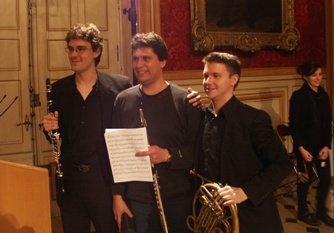
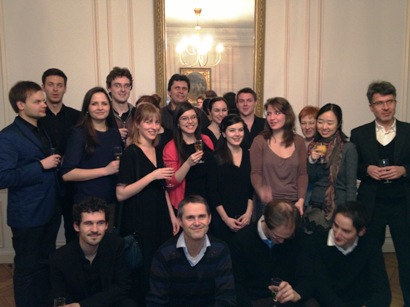 Anton Rist felt he developed his skills as a chamber musician, whereas Mathilde Calderini felt the experience provided an excellent opportunity to build her international professional network. As Georgina Oakes noted, “Music connects us all!”
Anton Rist felt he developed his skills as a chamber musician, whereas Mathilde Calderini felt the experience provided an excellent opportunity to build her international professional network. As Georgina Oakes noted, “Music connects us all!”

